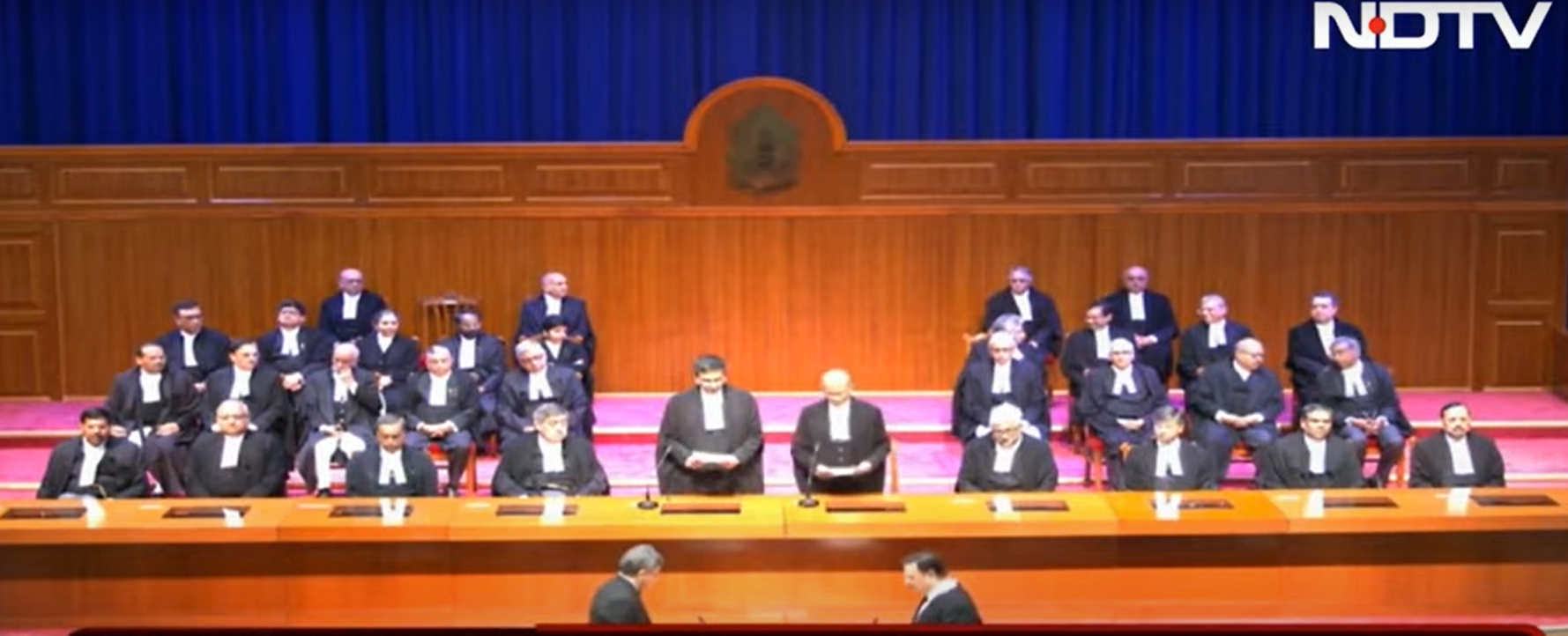 Dispatches
DispatchesIndian law students are reporting for JURIST on law-related developments in and affecting India. This dispatch is from Nakul Rai Khurana, a law student at Jindal Global Law School.
On Monday, five new judges of the Supreme Court of India were sworn in at a ceremony held in New Delhi. The event was attended by top government officials, legal luminaries, and members of the judiciary. The new judges, who were formally appointed by the President of India, will now join the country’s highest court and play a crucial role in dispensing justice to the people of India.
The five judges who took the oath of office are Justice Pankaj Mithal – Chief Justice of Rajasthan High Court, Justice Sanjay Karol – Chief Justice of Patna High Court, Justice PV Sanjay Kumar – Chief Justice of Manipur High Court, Justice Ahsanuddin Amanullah – Judge of Patna High Court, and Justice Manoj Misra – Judge of Allahabad High Court. They come from diverse backgrounds and bring with them a wealth of experience and expertise. The addition of the five new judges has increased the strength of the Supreme Court judges to 32. two short of its capacity of 34.
The appointments come after a long tussle between the central Union Government and the judiciary concerning the collegium system of judicial appointments (previously covered by JURIST). Several uncharacteristic objections were made by the Union Government concerning the lack of ‘transparency’ and ‘accountability’ in the Supreme Court Collegium system and its appointment of judges.
Much controversy also ensued when the elevation of Mr. Saurabh Kirpal, Senior Advocate as a judge of the Delhi High Court was contested by the Union government, citing his sexual orientation and his foreign partner as concerns for bias (see previous coverage). The long-standing confrontation between the Union Government and the judiciary displayed a conflicting state of the checks and balances system that is envisaged in the Constitution of India.
The recommendation of the five judges of the Supreme Court was made in December 2022, which drew no response from the Union Government until a bench comprising of Justices Sanjay Kishan Kaul and Abhay S Oka expressed their frustration and gave the Centre an ultimatum to process the appointments within 10 days. It is also pertinent to note that the Union Government still has taken no substantive stance against the appointment of Mr Kirpal, having asked the Supreme Court Collegium to reconsider its stance. The Supreme Court rebuked the Centre’s rejection on 18th January 2023 and reiterated the appointment of Mr. Kirpal. I must say that the apex court’s regard for constitutional recognition of rights and freedoms pertaining to Mr Saurabh Kirpal has garnered solidarity with the citizens as well. The Union Government must not indulge in attempts to limit one’s merit based on their sexual orientation. The Supreme Court, true to its virtues, has upheld the rights of an individual, albeit not judicially, in ensuring that there is no discrimination on the basis of one’s orientation. This is a welcome move by the Supreme Court.
What lies ahead is a challenge that both the judiciary and the executive must address. On the one hand, there is a need for more transparency in recommending elevation of judges, while on the other, timely approval of appointment of judges to counter the rising vacancies is essential.

